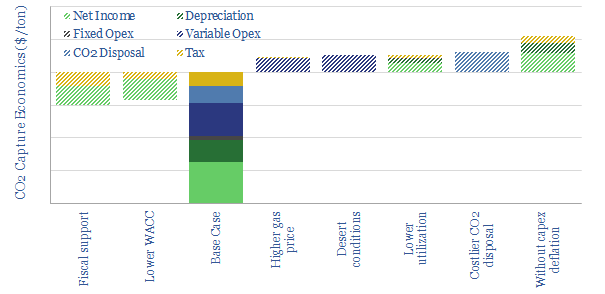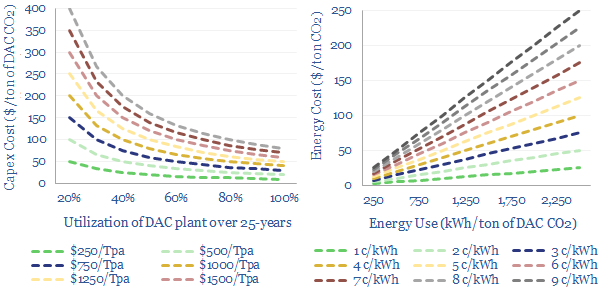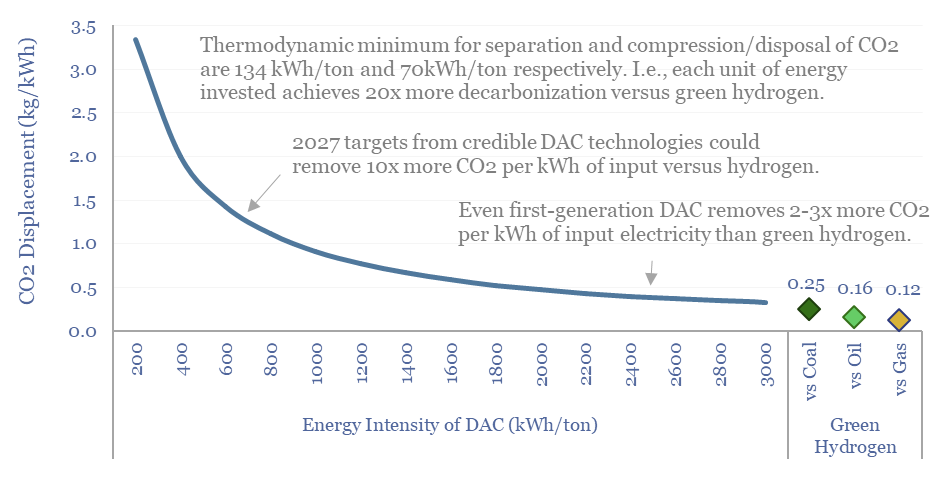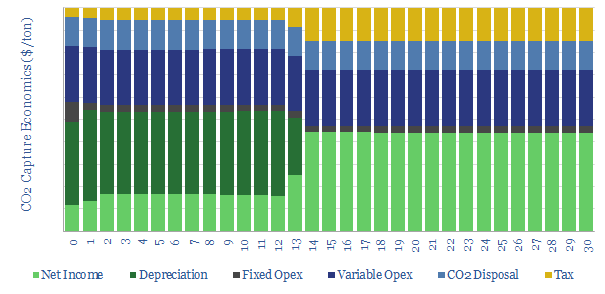Direct Air Capture of CO2 (DAC) will cost around c$200/ton of CO2 abated, all in, and apples-to-apples with other technologies assessed by TSE. This data-file models the costs of direct air capture plants in detail, finding a realistic range of $100-1,000/ton.
Our base case model into the costs of direct air capture is based upon excellent technical disclosures from Carbon Engineering, which we have aggregated and somewhat generously de-risked.
Our data-file includes a full breakdown of the capital costs and the energy associated with each component of the DAC plant, plus an explanation of the process.

In 2023, we have also updated the data-file to reflect a wider sample of technical papers, and disclosuses from emerging DAC companies into capex, opex, energy use, et al.
Stress-testing shows total CO2 removal costs will range between $100-1,000/ton of CO2, flexing 18 input assumptions, such as WACCs, tax-support, cost-deflation, utilization, power prices, gas prices and water prices. (gas- and water-intensity of the process should be noted).

Related research. Carbon Engineering is commercializing a ‘wet process’ for DAC using solvents, which informs our numbers here. There is also a ‘dry process’ that we have reviewed using sorbents, being progressed by companies such as Climeworks.
We still prefer the economics and philosophy of nature-based solutions for sequestering atmospheric CO2. Although next-generation DAC companies may provide an increasingly interesting complement.
Although it is fascinating to consider that next-generation DAC could ultimately abate 10-20x more CO2 than green hydrogen for the same amount of input energy (chart below). Perhaps AI will help to unlock this upside.

The full data-file contains eight tabs, aggregating useful bottom-up capex numbers and opex-related details, gathered from company disclosures, patents and technical papers. Please download the data-file to stress test the economics costs of direct air capture.
